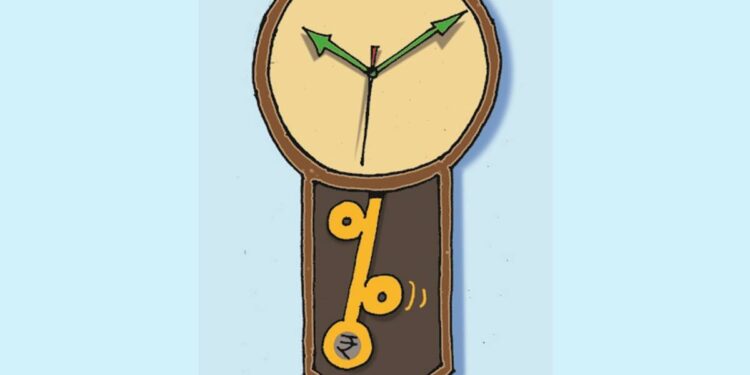 In its bi-monthly review, the monetary policy committee (MPC) of RBI left the policy repo rate unchanged at 4% and the reverse repo rate at 3.35%.
In its bi-monthly review, the monetary policy committee (MPC) of RBI left the policy repo rate unchanged at 4% and the reverse repo rate at 3.35%.By Pankaj Pathak
September was an eventful month for the bond market. The expectation of a reduction in government borrowing and chatter on global bond index inclusion fueled a rally in the bond market in the first half of the month. It got further accentuated by the below expectation inflation print of 5.3% in August 2021. The10-year government bond yield came down from 6.22% on August 31, 2021to 6.14% by September 20, 2021. On a monthly closing basis, the 10-year Gsec yield ended flat at 6.22%.
Yield curve
The yield curve (yields on different time to maturities) flattened during the month as the short end (up to 3-year maturities) bond yields moved up by 15-25 basis points on a month-on-month basis while the longer maturity (15 years and above) bond yields came down by 10-15 basis points.
The central government has pegged the second half government borrowing at Rs 5.03 trillion. This will take the full year of government borrowing to the budgeted level of Rs 12.05 trillion in FY22. However, there will be no extra borrowing on account of the GST compensation cess loan. The government had earlier estimated an additional borrowing requirement of Rs 1.59 trillion to meet the GST shortfall in FY22. The unchanged full-year borrowing implies that G-sec issuance to fund the fiscal deficit is actually lower.
RBI monetary policy
In its bi-monthly review, the monetary policy committee (MPC) of RBI left the policy repo rate unchanged at 4% and the reverse repo rate at 3.35%. It also kept its forward guidance “to continue with the ‘accommodative’ stance as long as necessary to revive and sustain growth on a durable basis and continue to mitigate the impact of COVID-19 on the economy, while ensuring that inflation remains within the target going forward.”
This was broadly in line with the market expectation. The biggest surprise was the complete removal of G-SAP (RBI’s bond-buying programme). In the backdrop of high oil prices and rising US treasury yields, the removal of G-SAP should lead to a rise in long-term bond yields. The 10-year bond sold off by about 5 basis points after the announcement. Currently, the 10-year G-sec is trading around 6.31%, a level last seen in April 2020.
Liquidity and way ahead
On the liquidity front, the RBI did respond to the market’s call and announced to increase the amount under 14 days Variable Rate Reverse Repo (VRRR) auctions in a staggered manner from current Rs 4 trillion to Rs 6 trillion by December 3, 2021. It also outlined an option of conducting 28 days VRRR, if required.
We particularly like the 3-5 year segment of the government bond market which in our opinion is already pricing for some liquidity normalisation and a start of rate hiking cycle by end of this year. Given the steep bond yield curve, 3-5 year bonds offer the best roll down potential as well. In absence of assured RBI purchases, longer-term bonds may face increased volatility and potentially lower returns going ahead.
In the current juncture, a combination of liquid to money market funds to benefit from the increase in interest rates in the coming months; along with an allocation to short term debt funds and/or dynamic bond funds with low credit risks should remain as the core fixed income allocation.
The writer is fund manager, Fixed Income, Quantum Mutual Fund
Get live Stock Prices from BSE, NSE, US Market and latest NAV, portfolio of Mutual Funds, Check out latest IPO News, Best Performing IPOs, calculate your tax by Income Tax Calculator, know market’s Top Gainers, Top Losers & Best Equity Funds. Like us on Facebook and follow us on Twitter.
![]() Financial Express is now on Telegram. Click here to join our channel and stay updated with the latest Biz news and updates.
Financial Express is now on Telegram. Click here to join our channel and stay updated with the latest Biz news and updates.















